Rashmi: I would like to address craft and technology as aesthetic fundamentals and understand how both these elements inform your respective works
Anu: I love to work with steel. Maybe it’s the architect in me, but that’s my material of choice today. To buff a piece of steel has been a challenge, to cut it by hand, get the die – that process is not done in a big factory, so it’s been a learning for me. But, I wanted to use steel because it’s very much a material that India is using today for all infrastructures and building. That’s where the love of steel comes from. I don’t know how to talk about the technology behind it – we do use pantographs, laser cutting and technical drawings. I do a lot of it on AutoCAD. And then juxtapose it with the other love of my life—jute, which I adore. Fabric, threads, textiles… jute—very raw.
Rashmi: And is there a handmade aspect to your work?
Anu: It’s all handmade and crafted in my home studio. I still work from home. I make it using the old patwa technique of winding thread, and jute on top of thread. There’s nothing new about it, I’m just doing it with steel, that’s all.
Rashmi: Rajesh, you work with mills weaving your own fabrics. Is it that a hand loomed process or a machined, technological process or both? What is the relationship between man and machine in your work?
Rajesh: It’s a great combination and the fact that we are in India really helps. I think that’s the basic strength of India – we are not completely out there. To mix both is a very interesting thing to do. Anu, I didn’t know you were an architect, architecture is my first love too. I guess people like us, who like to work with similar materials, would end up speaking the same language.
…about technology and hand craft, to mix them together is the ultimate thing to do. It’s the ultimate luxury and that’s a luxury that we can afford right now… and that’s what I guess we should do – Rajesh
Rashmi: Within that sort of mix and match, have you discovered anything really interesting? Have you created any new techniques, or has something innovative resulted?
Rajesh: I guess the goal is to find a technique a day. It doesn’t happen very often, but sometimes you do. I wouldn’t say we “discover” or “invent” it, we just use the permutations and combinations in a different way and that’s how new things come about.
Anu: I work literally with my craftsmen. I didn’t have the technique or the know-how. I have no preconceived ideas, thus I fly! Being an architect, I’m used to collaboration. I only have an idea and it comes alive in the process. So when you work a craftsman, you think, “Wow, why don’t we do this?” and “Why don’t we do that?”. It’s a process, right? Some are completely just prototypes, which won’t ever be worn – it’s experimentation. And I do experiment a lot. It evolves.
… the coolest thing, is when the craftsman is working right in front of you. He says, “ but it can’t be done” or “I’ve never done this before.” That’s when it really unfolds. And that’s the fun part about it. It’s just fantastic, you’re continuously learning – Anu
Rashmi: Is there an openness towards collaboration and a sharing of ideas between yourself and the craftsman?
Anu: Yes and no. Everybody’s in a box. The craftsmen have been doing this for so many years. You’ve got work with them one-on-one and ask them, “Can be done a little differently?”
Rashmi: Can you speak of some really interesting techniques that you are drawn to, that you love ?
Rajesh: You know, I am a really old man [laughs]. I’ve done a lot of weaving. New materials and various kind of weaving is something I am now really looking forward to. We’ve gone into this whole backward thing. We’re growing our own kind of cotton. We spin our own yarn. It’s silly…but we have to do it. Nobody will do it for us, so we end up doing it ourselves. That’s an area where I waste a lot of my time, that’s what I do. New yarn. New fiber. New ways of twisting it. It’s something which I’m spending a lot of time on right now. A lot of leather moulding as well. Jewellery. A lot of silver actually.
Rashmi: Rajesh, can you speak about your use of the leather? It constantly appears in your work.
Rajesh: Leather—I’ve always loved leather. I’ve been working on it almost since I was a kid really. There’s an old technique where they mould a lot of hide, especially camel hide. It’s untreated leather. That’s what I started off with when I was in school. That’s where my love for leather started.
Rashmi: We live in a country where a lot of people love highly embellished clothing, lots of ornamentation and ‘stuff’ on their clothes. How have your design sensibilities emerged? Have you both faced any struggles?
Rajesh: No struggles at all. It’s just that I’m broke. I’m kidding [laughs].
The thing is, you’ll always find people who’ll understand your language, right? So that’s what you work on. You know, after that, you don’t have to really worry about how many Swarovski’s you’re putting on that lehenga.. But I guess you can’t go against your grain. You just do what you do – and you survive. That’s what it is. – Rajesh
Anu: Similar. No struggles, per se. In the sense you find your people—the people who understand your aesthetic and are willing to pay what you ask. In jewellery, it is interesting – we’re in a gold and diamond country. People buy jewelry for investment or for show. I’m going to be very graphic, my whole thing to that is, “fuck you.” I really cannot be bothered with that whole system. The whole class system comes into it… how much can you afford… I have the same thoughts on embellished lehengas. I hate weddings – I hate all of that. So I started making jewelry in response to that. I want to wear something which is a unique statement.
Rajesh: … I love jewelry for men. We make jewelry for men. Bengali karigars are great but they know a certain kind of language… training them from the beginning is a really tough thing.
Anu: Unless a craftsman is employed by you and you’re taking care of him, it’s difficult, you can’t expect him to spend 50 hours on a new process, while he could have been making a product that would sell easily. To make a craftsman break from what he’s been doing over the years, that time is money. It’s hand to mouth. You have to respect that too.
Rashmi: Have you ever had to work with, or design things that you didn’t love?
Anu: [laughs] No!
Rashmi: But have you ever found yourselves having to cater to what the client wants? Drawing back a little bit on your aesthetic, modifying it or making it commercial…
Rajesh: Basically what you are saying is ‘have you been a slut?’ Yes.
Anu: We all end up being sluts.
Rashmi: We’ve all had to do it. You have to listen to feedback. When you’re making something for somebody to wear, eat or consume, there has to be some level of access…or does there?
Anu: But not where you lose your complete aesthetic, I don’t compromise on that. If somebody says, “That piece is really too heavy” – it’s steel so of course I’ll listen. You don’t come to en Inde for a demur piece and you have to be careful about not diluting your language. There’s no pleasing the customer, there never really is.
If you are here, don’t tell me to do something for you. You can go to somebody else. This is what I do – like it or not, nobody’s forcing you to buy it. – Anu
Rashmi: What do you mean, “there is no pleasing the customer?”
Anu: In the sense if a customer comes to you and says, “Can you take this pendant off?”, I have done that. They end up saying, “Oh, I didn’t expect it to look like this.” However, there is a technicality behind it, it is engineered. It doesn’t just ‘sort of happen’. You take the pendant off… all of a sudden it’s a different piece. However when I’ve tried to bend over backwards, it has backfired.
Rajesh: I’ve compromised like hell.
Rashmi: “Like hell”, that’s a grand statement.
Rajesh: I’ve done it. I’ve done it. I’m being honest. I’ve done it.
Anu: You’ve been in the business also, for so long.
Rajesh: I’ve done it… unfortunately. You have to do it. I think I’m doing it all the time and it’s terrible. That’s what kills you all the time but you have to do it. It’s just that you can’t say “no” to certain people. You are forced into a certain situation where you have to do things.
Rashmi: Have you had to compromise with the collections you sell in stores? Perhaps for commercial reasons?
Rajesh: Somebody else runs my business now. That’s something that I don’t want to run. I don’t want to be in the business of fashion. I’m not in the business of fashion. I just like to make new things. Maybe it’s not a sensible thing to do. But for me to set up another loom or to twist my next wire, I need a certain amount of a “cushion”. For that… yes, I have compromised. It’s like getting your own kick, right? It’s like getting your fix. You need it – so you do anything for it. A lot of are us into experimentation and R&D. And that’s what our job is. If we can solve a problem a day, it’s great.
Anu: Whatever you choose to call us, designers/artists/researchers – the process that we enjoy so much is related to doing new things. And about the rest, you need a business partner – just as I have mine, Sonal
Rajesh: You can totally isolate yourself… at least that’s what I try and do. I just isolate myself from all that. It’s not my business.
I’m just the R&D person there – I’m just in the R&D department. Fashion is a lot of rubbish too. This whole thing about the fashion business… it doesn’t apply to India. Who gives a damn about a lot of things people really talk about? We have to find our own language – Rajesh
Anu: I think so too.
Rajesh: I think we’ll have to make our own way. We can’t follow what Europe has to tell us, for example. In India, we have to evolve in a different way. Our girls are not going to get rid of their sari’s. We’ll have to shoot ourselves in the head if we let go of our saris really. Like the Japanese, it is our kimono.
Rashmi: I think we need a new lexicon for our sensibilities and what’s being done here. I know people may resist being categorized, you don’t want to be called a “minimalist”, “maximalist” or an “essentialist”. Besides, those are very Western concepts. Can we come up with a new language to describe our vision and perspectives?
Rajesh: I don’t know. I’m not very articulate about things like that. Everybody does what they do. I think that’s what it’s all about.
Anu: It’s just a lot of play. I’m just happy that at the end of it we end up with beautiful things that people can wear.
Rajesh: I wasted a lot of time trying to do things, at least as far as business is concerned, trying to do things the way it happens in the West. And I must admit that I failed miserably because it doesn’t work for me. Maybe it worked financially – but in my head it didn’t work. It’s silly. It doesn’t make sense to me.
Rashmi: What were some of those things? Some of those models or business models that you tried?
Rajesh: For a very long time I found it really strange to hire a PR agent. It was silly of me, completely weird. I felt I was being a slut. But you couldn’t survive if you didn’t pay your dues to the ‘mafia’. I think “mafia” is the right word – it just doesn’t work for me. I think we’ll find our own way of going around it, doing things the way we want to. It will be really unfortunate if we just pick up these models and force it down into our throats. I like what the Japanese did when they did it in the 80’s, for example. They did push the limit. We have to find our own language. Why do we have to do six collections a year? Why do you have to throw that shirt out? It just doesn’t make sense.
Rashmi: There is the business element to it, of course. Fundamentally, you do have to sell those things.
Rajesh: Sure, but imagine if every woman around the world carried an LV bag. It would be a very boring world, right?
Rashmi: It already is! There are too many around.
Rajesh: No, it’s a very well made bag, but if every woman did own one it’d be sick. You know… like a disease. You have to stay away from it. But that’s the business the fashion.
Maybe it’s got something to do with our philosophy, our spirituality – maybe we don’t have to shove it down their throats but we can have our own language. –Rajesh
Rashmi: Would you agree that both your works certainly speak this new language of newness and individuality?
Anu: I strongly agree with that and I strongly work with that.
Rajesh: I don’t think about it too much, really. I just do what I do. Within fashion, one can also fall into a trap, if you get into one of those moulds which can’t be broken, then it becomes suffocating and really boring.
Rashmi: But within these ‘rules’, there are common threads that start to form between groups of people – designers, and artists and creatives because it’s about the era; the Zeitgeist; it’s about a thought; materials and techniques, social changes. Maybe it’s not up to us to come up with these sort of new words. Maybe it’s the critics job…
Anu: Critics! Aaey… let’s leave it to them!
Rajesh: That’s a good idea. As it is, we have such amazing journalists in the country. I am sure they will come up with something [sarcasm].
Anu: It is a tough place for young designers.
Rashmi: Why?
Anu: Because of the business of fashion. I think it’s a difficult place for them. It’s not easy.
Rashmi: But is it easier now than it was twenty years ago?
Rajesh: Yes and no. Because we had more freedom when we started out. The market was really small then. I remember my first collection, it was really small. There are so many more jobs. People are also much more open. It’s easier in a way, but if a designer wants to start out, it’s still much more difficult.
Recently, at the FDCI Board Meeting, and we were discussing how to get younger, fresh blood in. It’s difficult because there are so many shows, so little time and a limited amount of money. How does one get new people in? It becomes difficult. – Rajesh
Rashmi: There is more industry support. But there is also a lot more competition now.
Rajesh: Competition is good. Also, after awhile, I don’t think designers should worry about competition. They should just do their own thing.
Anu: Agreed. I don’t agree with that word. How can there be competition? If you are a designer, doing what you are doing, you’re unique. There is competition if you’re all making Helmut Lang Jersey t-shirts… but not for a unique language. I thought that’s why you become a designer. God bless you if you have a financial backing, because it does help of course for the whole R&D process – you need that kind of cushion. And if you do have it, then you really are in a really good position to just be true to a unique vision.
It’s just weird, this word ‘competition’. I don’t like it because there is something negative about it. “I should improve quality” or “I have to keep up with the market”- that kind may be positive, but it’s mostly negative – Anu
Rajesh: This guy from design school, his name was Tejindar Singh— Teji, we used to call him. He was one of the finest students I have met. He was the finest guy in our batch and he would complete each and every assignment two days in advance. So all of us – and we had an exceptional batch I would say – used to be motivated by him. If Teji could finish it two days in advance, we could do it on time and yet we were always late. I think that kind of competition helps. I understand what you say about negativity, but sometimes it helps. But when it’s too close or between people you have to sit and eat with everyday, it’s a problem. So if the cashmere coming out of inner Mongolia is better than coming out of Ladakh, I think “Why the hell can’t we do it?” But it’s just about that – problem solving everyday.
_________________
Rajesh Pratap Singh – Founder and Creative Director of Rajesh Pratap Singh
Anupama Sukh Lavani – Founder and Creative Director of jewellery line en Inde. en Inde is / was a client of the Border&Fall Agency.
Rashmi Varma – Founder and Principal Designer of Rashmi Varma. Rashmi Varma is / was a client of the Border&Fall Agency.

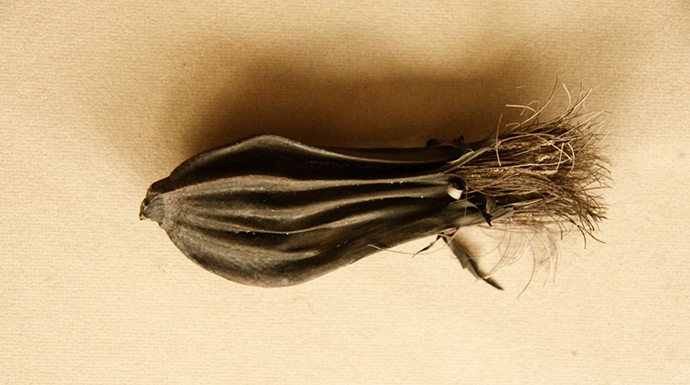
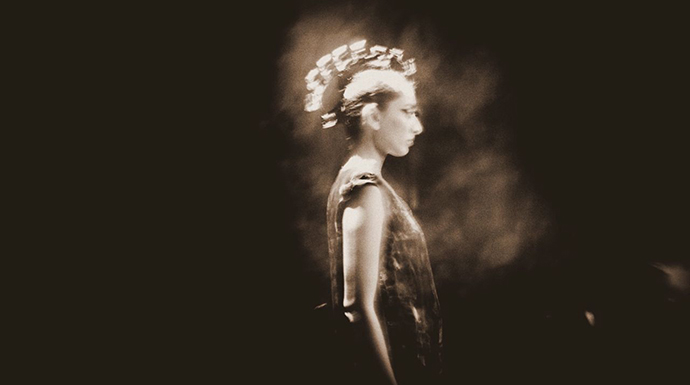
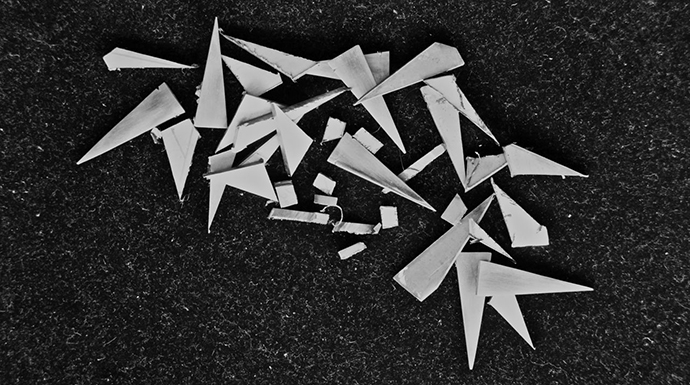
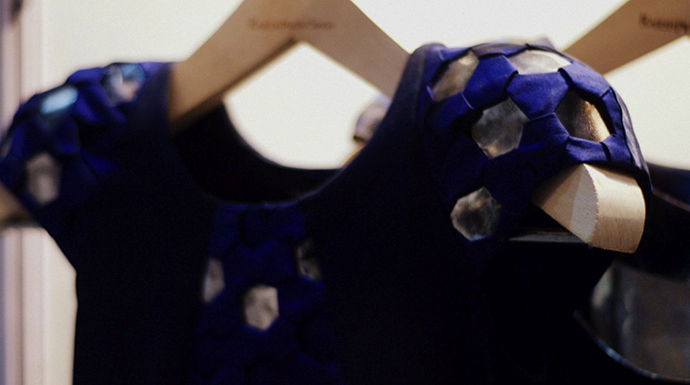
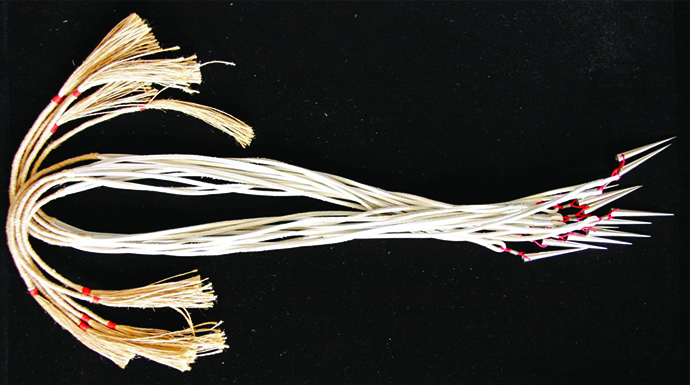
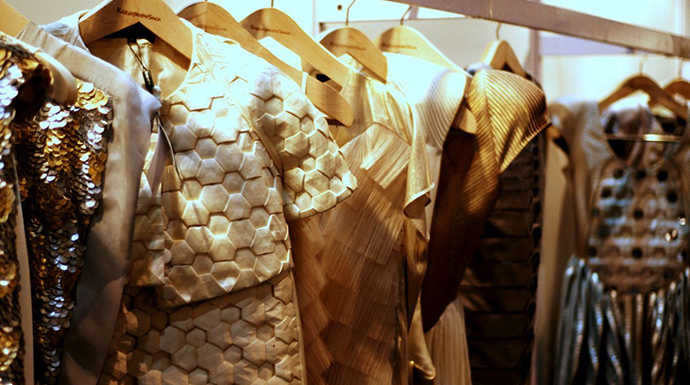
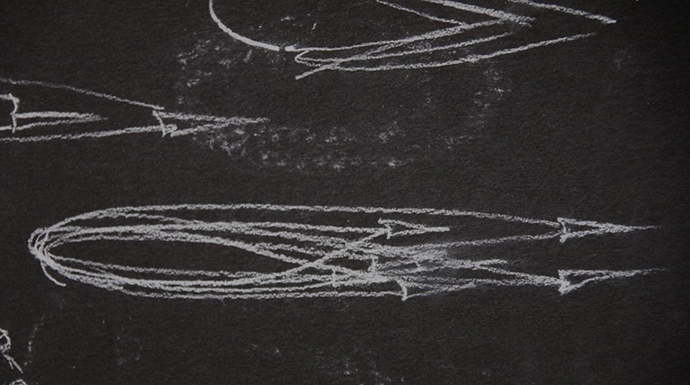

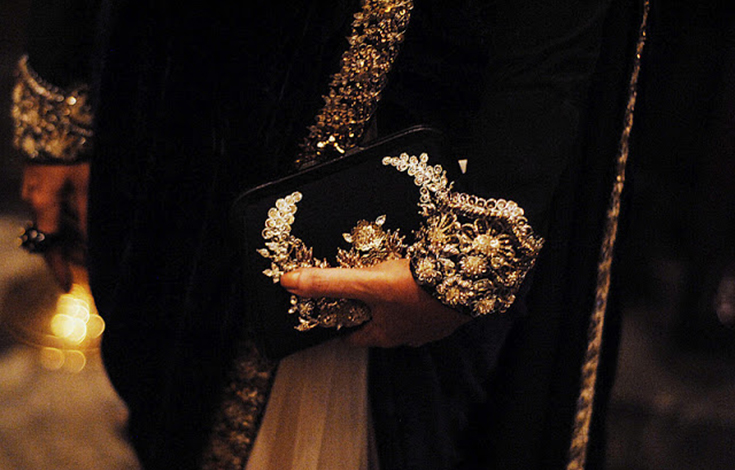
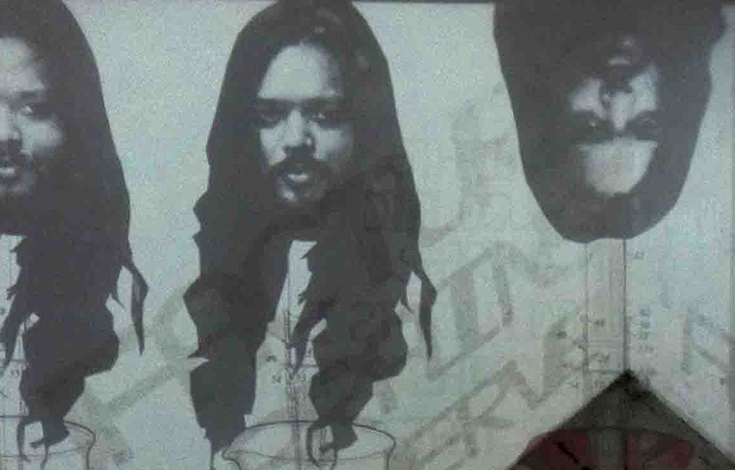
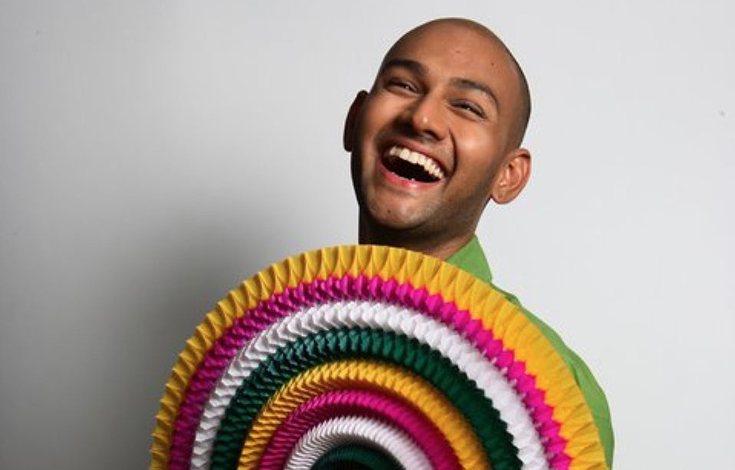
Thanks for sharing this conversation. As a designer the questions addressed above pop up in mind from time to time. It was great to read Anu and rajesh’s views on these issues. Its rare to get to know whats going on in the minds of designers behind successful brands. It helped me appreciate the thought behind the brands, En Inde and Rajesh Pratap Singh better.